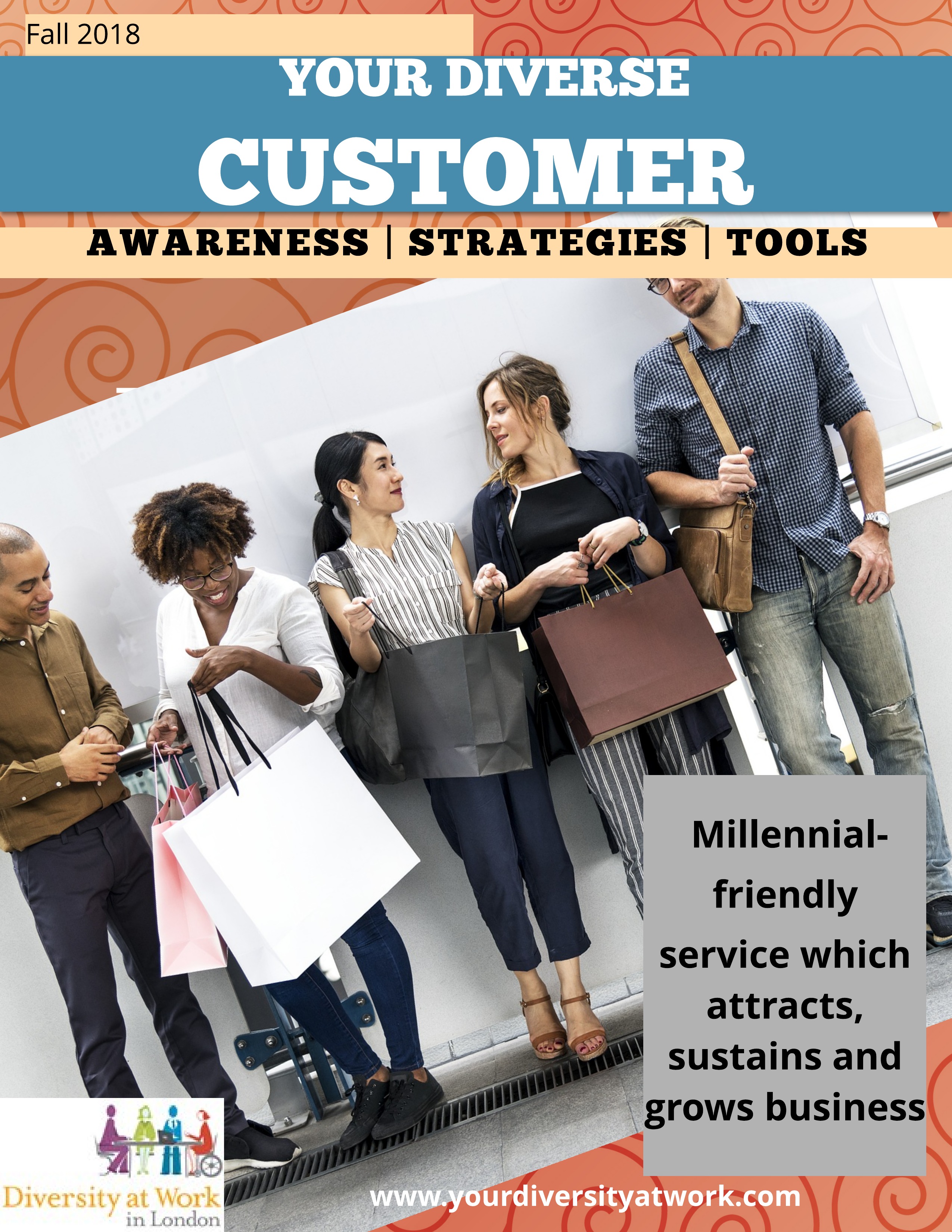Evelina Silveira, President, Diversity at Work
What is the first thought that comes to your min d when you hear the term “mental illness”? You probably think about a commercial which is promoting mental health or a person you may know who is struggling with an illness. Alternatively, we may be speaking about you. What we often forget is that people with mental illness come to our organizations and businesses looking for goods and services. For some, their disorder will not impede their interactions. However, for others, they may experience barriers which prevent them from initiating or completing a transaction with you.
d when you hear the term “mental illness”? You probably think about a commercial which is promoting mental health or a person you may know who is struggling with an illness. Alternatively, we may be speaking about you. What we often forget is that people with mental illness come to our organizations and businesses looking for goods and services. For some, their disorder will not impede their interactions. However, for others, they may experience barriers which prevent them from initiating or completing a transaction with you.
These individuals whose symptoms are more visible may require a heightened level of sensitivity and patience as well as an out-of-the-box type of service. According to the Centre for Addictions and Mental Health in Canada (CAMH), mental illness is the leading cause of disability
The Life and Economic Impact of Major Mental Illnesses in Canada: 2011-2041. Prepared for the Mental Health Commission of Canada, they indicate 1 in 5 Canadians experiences a mental health or addiction problem. By the time Canadians reach 40 years of age, 1 in 2 is the number.
The alarming statistics indicate this is a large demographic –one that requires our attention to ensure we provide an excellent customer service experience, get their repeat business and generate customer loyalty.
Learn more about serving customers with mental illness is our issue of Your Diverse Customer Training Ezine. The topics include:
- What is mental illness?
- Tips for conveying and receiving information.
- Interview: How to conduct how visits.
- Template: Customer assistance form. A tool for providing service for unpredictable customers.
- De-escalation – Tips for avoiding potentially violent situations.
- Application and Resources – Case Study, link to further videos and learning
Purchase your Pdf copy today!

Your Diverse Customer – Serving Customers with Mental Illness
$20.00

 manage an agency, you will most definitely have Millennials serving your customers /clients. Traditional forms of training are ineffective. Written text is not the way to go! With the multitude of media these days, Millennials expect the training to be engaging, visually-pleasing, authentic and timely.
manage an agency, you will most definitely have Millennials serving your customers /clients. Traditional forms of training are ineffective. Written text is not the way to go! With the multitude of media these days, Millennials expect the training to be engaging, visually-pleasing, authentic and timely.
 Evelina Silveira, President, Diversity at Work
Evelina Silveira, President, Diversity at Work
 The proportion of senior citizens (aged 65 and over) in Canada has been increasing over the past 40 years, and this group is becoming a larger segment of our population. According to Stats Canada, the proportion of seniors grew to 14% in 2010.
The proportion of senior citizens (aged 65 and over) in Canada has been increasing over the past 40 years, and this group is becoming a larger segment of our population. According to Stats Canada, the proportion of seniors grew to 14% in 2010.



